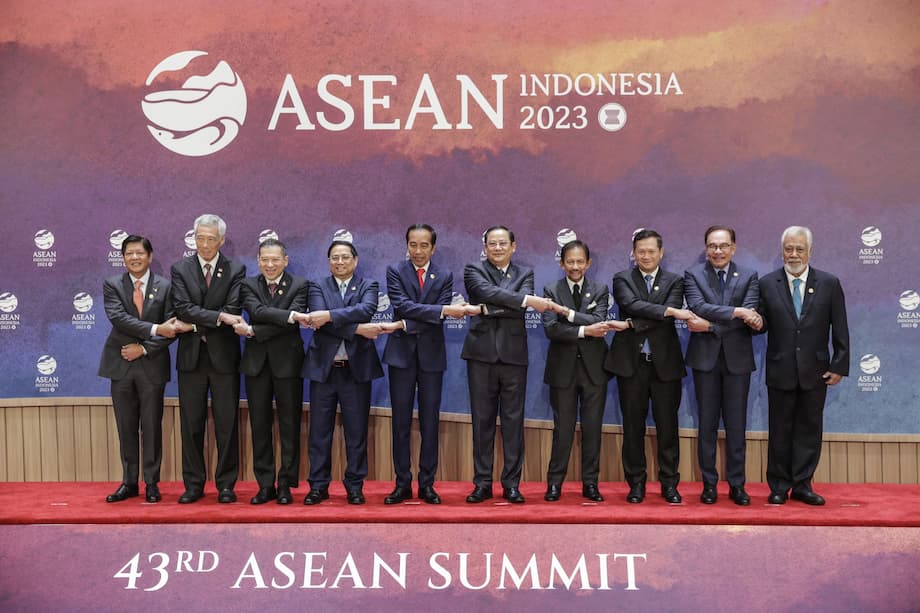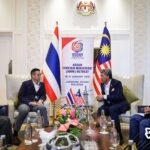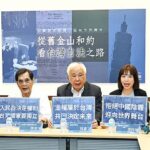Malaysia sets out to reenergize Asia’s largest trade bloc
Malaysia will convene a leaders meeting of the Regional Comprehensive Economic Partnership in October in Kuala Lumpur, timed to run alongside the 47th ASEAN Summit. Prime Minister Anwar Ibrahim framed the gathering as a chance to take stock of progress, speed up delivery of commitments, and signal that Asia intends to champion open trade at a time when parts of the world are turning inward. RCEP, which took effect in 2022, brings together 15 economies that account for around 30 percent of global gross domestic product. It includes the 10 ASEAN members, plus Australia, China, Japan, South Korea, and New Zealand.
- Malaysia sets out to reenergize Asia’s largest trade bloc
- What the planned RCEP summit aims to achieve
- How RCEP works and why it matters
- ASEAN China FTA 3.0 set for October presentation
- A strained global trade backdrop
- Can ASEAN maintain centrality amid rivalry
- What success in October could look like
- Risks and limits to watch
- Key Points
Speaking at the Kuala Lumpur Roundtable on Asia-Pacific Regional Cooperation of the Boao Forum for Asia, Anwar said the pact needs political drive to deliver real outcomes for businesses and workers across the region. He argued that Malaysia, as current ASEAN chair, wants to demonstrate practical leadership on trade facilitation and cooperation.
Introducing his message to regional partners, the prime minister stressed that the agreement cannot be treated as a document that sits on a shelf.
Prime Minister Anwar Ibrahim said: “RCEP must not remain a legal text on paper. It must be renewed with political energy.”
The October RCEP session is expected to draw leaders and senior officials from across the bloc for discussions on the implementation record, outstanding technical work, and next steps that can boost investor confidence and supply chain planning.
What the planned RCEP summit aims to achieve
Malaysian officials and regional media describe three goals for the leaders meeting: assess what has been delivered since the agreement entered into force, identify ways to accelerate implementation where members lag, and send a clear signal that Asia remains committed to open markets and stable trade rules. The agenda is likely to emphasize tariff phase downs, customs modernization, and steps that make it easier for companies, especially small firms, to use the pact in day-to-day trade.
Speeding up implementation
Implementation touches many practical issues. Tariff schedules continue to decline in stages, so customs agencies must update systems on time. Traders need clarity on the single certificate of origin that unlocks RCEP preferences, and ports benefit when members adopt compatible data formats that let shipments clear faster. Standards bodies can support trade by improving mutual recognition arrangements for testing and certification, which reduces repeat checks at borders. Leaders can also press for data-sharing pilots across national single windows so paperwork is reduced for logistics providers and exporters.
Refreshing political momentum
Political attention matters because RCEP’s technical committees and working groups move faster when heads of government make priorities explicit. A leaders push can translate into more resources for translation of rules into business guidance, targeted assistance for customs digitization, and outreach that raises awareness among smaller companies. Public commitments at the summit can also help shield trade facilitation projects from domestic protectionist pressure.
How RCEP works and why it matters
RCEP builds on a web of ASEAN trade deals with key partners and creates a single framework across the 15 members. The pact covers trade in goods and services, investment, intellectual property, competition, e-commerce, small and medium enterprises, and economic cooperation. According to ASEAN, the RCEP area includes nearly half the world’s population, about 30 percent of global GDP, and more than a quarter of global exports. The agreement recognizes ASEAN centrality and seeks to reduce development gaps by helping smaller economies participate in regional supply chains. An official overview is available from ASEAN (see the agreement page at asean.org).
Tariffs and rules of origin
One of RCEP’s biggest benefits is a more unified set of rules of origin. Companies that source inputs across several member countries can count those inputs toward the regional value needed to qualify for lower tariffs. An electronics producer, for example, might design in Singapore, fabricate components in Malaysia and South Korea, perform assembly in Thailand, then ship to Japan. Under RCEP, the value added across these member economies helps the final product qualify for preferences, cutting costs and improving delivery times.
Digital trade and small firms
The agreement includes commitments on e-commerce and cooperation that help small and medium-sized enterprises. Clearer rules on paperless trading and electronic authentication lower administrative hurdles. Shared training and technical support can help small exporters in sectors like food processing, fashion, and consumer electronics learn how to use preferences, navigate customs, and meet standards in regional markets. The more small firms participate, the wider the spread of gains from trade.
ASEAN China FTA 3.0 set for October presentation
Alongside RCEP discussions, Malaysia says ASEAN and China have concluded negotiations for an upgraded ASEAN China Free Trade Area package, often described as FTA 3.0. Leaders are expected to review the outcome in October. The refresh is designed to reflect new economic realities, with sections that address the digital economy, greener growth models, supply chain connectivity, technical standards, and support for small firms. Anwar has framed the upgrade as evidence that ASEAN can strike modern, rules-based arrangements with major partners.
Before citing the negotiated upgrade, the prime minister underlined the approach he hopes to see across the region.
Prime Minister Anwar Ibrahim said: “For ASEAN, this free trade agreement demonstrates that engagement with China can be rules-based, inclusive and future-oriented.”
China has been ASEAN’s largest trading partner since 2009. The Chinese customs agency reported that ASEAN China trade reached around 546.6 billion dollars in the first seven months of this year. Within ASEAN, Malaysia, Vietnam, and Indonesia have been among China’s top partners by turnover, reflecting tight production links in electronics, machinery, and commodities.
What the upgrade changes
While full details will be released to leaders, negotiators describe a sharper focus on the drivers of growth now shaping regional commerce. That includes provisions aimed at smoother cross-border data flows where appropriate safeguards are in place, cooperation on electric power transition technologies, and measures that make supply networks more resilient to shocks. The package also points to better alignment of technical standards so exporters face fewer costly product redesigns across markets.
A strained global trade backdrop
The push to revive momentum comes amid a difficult period for the global trading system. The World Trade Organization’s dispute settlement system remains partially disabled, making it harder for countries to resolve disagreements. Large economies have turned to unilateral tariffs, export controls, and finance restrictions. Geopolitical tensions have bled into trade, investment, and technology policy, leaving businesses to manage new compliance risks and periodic supply disruptions.
In recent remarks, Anwar criticized the growing resort to trade walls and financial pressure tactics. He warned that fragmenting the system can weaken prosperity and create new vulnerabilities.
Prime Minister Anwar Ibrahim said: “History shows that when nations compete to build walls, prosperity declines and instability spreads. That is why we argue for sovereign interdependence.”
By sovereign interdependence, Malaysian officials describe a position that accepts the reality of cross-border links, while insisting those links rest on choice, resilience, and mutual respect. It opposes enforced dependence and opposes forced decoupling. That framing, which echoes long-standing ASEAN preferences, aims to keep commercial ties broad and predictable even during political strain.
Can ASEAN maintain centrality amid rivalry
ASEAN’s rotating chair, this year held by Malaysia, often works to keep all major players engaged in the same room. The group’s consensus-based approach and preference for dialogue are credited with easing tensions among neighbors, though this method can also slow action on crises. Analysts note that ASEAN centrality depends on convening power and a reputation for even-handed dealings, both of which come under pressure when great powers compete for influence. Background from the Council on Foreign Relations points to wide differences among ASEAN members in size, politics, and strategic outlook, which complicate unified positions on issues such as the South China Sea and Myanmar.
Some regional scholars argue that what looks like neutrality is better understood as calibrated hedging that changes by issue. A Malaysian academic recently described the approach as practical realism that balances security and economic interests.
Dr. Mohd Ramlan Mohd Arshad of Universiti Teknologi MARA said: “Neutrality is both a genuine foreign policy position and a carefully designed strategy for navigating the complexities of great power competition.”
Malaysia’s chairmanship is leaning into that tradition. Hosting an RCEP leaders session during the ASEAN Summit seeks to keep trade cooperation on track, even as security disputes and tariff fights grab attention. Keeping the focus on delivery, rather than declarations, could help sustain ASEAN’s role as an anchor for regional economic engagement.
What success in October could look like
Delivering measurable outcomes would give substance to calls for openness. Diplomats and trade specialists describe several moves that leaders could back without reopening the treaty text. Each aims to make it easier for companies, ports, and regulators to use RCEP in practical ways.
- Publish a joint implementation scorecard that tracks tariff phase downs, customs digitization milestones, and capacity-building projects across members.
- Launch a pilot for end-to-end electronic certificates of origin that work across all 15 customs systems, with a target date for full rollout.
- Expand mutual recognition arrangements for product testing in sectors such as consumer electronics, automotive components, and medical devices.
- Create an SME helpdesk in every member economy that offers plain-language guidance, training, and a hotline for RCEP-related trade procedures.
- Agree to a timetable to reduce specified non-tariff measures, supported by a dispute-avoidance mechanism that flags issues early to technical working groups.
- Signal support for responsible cross-border data flows in line with domestic safeguards, while committing to joint work on privacy and cybersecurity cooperation.
- Endorse a program to map critical supply networks and share best practices on diversifying sources for key inputs.
Such steps would not change legal commitments, yet they could cut costs for exporters and reduce uncertainty in logistics. A strong public message on delivery would also support investment planning in sectors where regional value chains are deeply integrated, including semiconductors, clean energy equipment, and advanced manufacturing.
Risks and limits to watch
Even with political will, the region faces structural tests. ASEAN economies vary widely in income levels, administrative capacity, and digital infrastructure. Non-tariff barriers remain a major drag on trade, from duplicative testing requirements to licensing delays. Some firms still find rules of origin complex when supply chains span many jurisdictions. Customs modernization can take time, and smaller agencies need training and budget support to keep pace.
External forces also shape outcomes. India stepped away from RCEP negotiations in 2019, and while members left the door open for a future return, its absence removes a large market from the pact’s coverage. Major economies outside the bloc have adopted industrial policies and security screening regimes that reshape supply chains. De-risking policies can divert investment and trade. That environment raises the stakes for practical steps that keep regional commerce predictable and efficient.
Consumer and business stakes
For consumers, smoother trade can mean more choice and better prices. For businesses, it can unlock new supplier relationships and easier entry into neighboring markets. The benefits depend on usage. Awareness programs and clear guidance can raise the share of shipments that claim RCEP preferences. If October’s meetings result in simpler paperwork, better digital tools, and a clear timetable for reducing obstacles, the gains would be widely felt across the region’s small and mid-sized firms.
Key Points
- Malaysia will host a leaders meeting of the RCEP trade bloc in October in Kuala Lumpur, in parallel with the 47th ASEAN Summit.
- Prime Minister Anwar Ibrahim says the session will take stock, accelerate implementation, and show Asia’s commitment to open trade.
- RCEP covers 15 economies and about 30 percent of global GDP, with rules that support goods, services, investment, and e-commerce.
- ASEAN and China have concluded negotiations on an upgraded FTA 3.0, to be presented to leaders in October with new provisions on digital trade and green growth.
- Anwar warned that tariff walls, export controls, and sanctions are straining the global system and called for sovereign interdependence.
- Analysts say ASEAN’s centrality rests on its convening role and a pragmatic form of neutrality that adapts by issue.
- Potential October deliverables include an implementation scorecard, e-certificates of origin, SME helpdesks, and timetables to trim non-tariff measures.
- Key risks include regional fragmentation, non-tariff barriers, and external policy shocks that alter supply chains.




